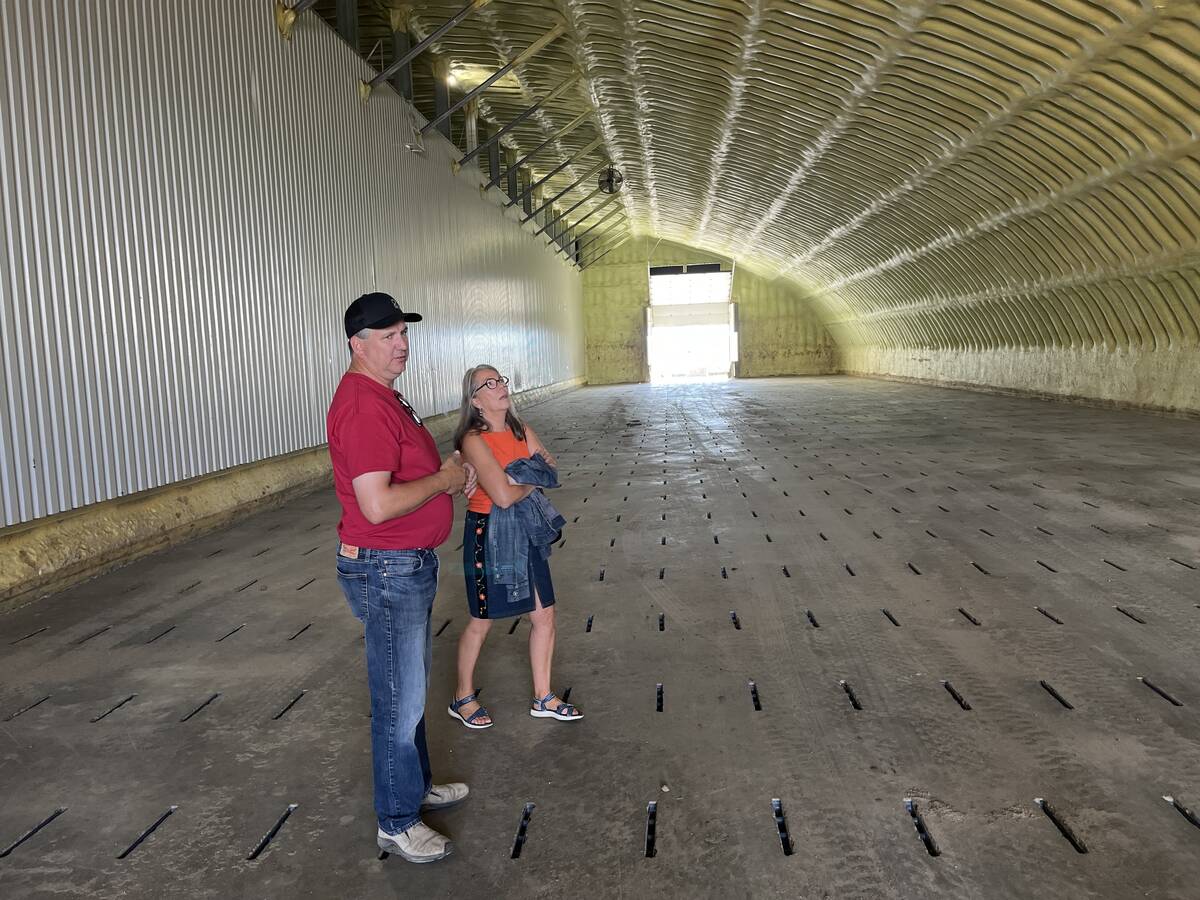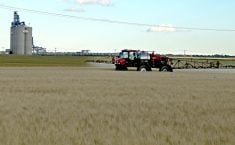RED DEER – The problem of abandoned oil and gas wells grows annually within Alberta’s energy industry.
When a well is abandoned, the company must reclaim the area before it discharges its interest on the surface title.
Problems arise when a reclaimed site is invisible or its location is unknown. This poses a risk to future developers because well bores are not removed, said a public safety spokesperson for the Energy Resources Conservation Board (ERCB), which regulates the industry’s infrastructure.
“Unless you know the history of the land, you won’t be able to tell it was there,” said Marilyn Craig at an Alberta Synergy meeting in Red Deer Oct. 26.
Read Also

Potato farm requires year-round management
The most recent Open Farm Day in Alberta showcased agricultural producers across the province educating the general public about the process that is required is to get food to their table.
Alberta Synergy is an organization of energy companies and landowner groups.
Within the next few months, the ERCB plans to release a website with maps to show where facilities are located. It will include the licence holder’s name and the location.
The province is also introducing a requirement next year that all abandoned wells be better identified. That information could be attached with a subdivision application to local approval authorities.
Municipalities will be required to ensure applicants have identified the wells and their location.
Registration of these sites may also be required with Alberta One Call, a provincial toll-free service that documents the location of active sites. Anyone doing construction should call this service before digging to learn where buried wells are located.
Some jurisdictions require a marker on the site but in developed areas or on farmland, markers are considered a burden and people do not want them, Craig said.
Abandoned pipelines are identified on land titles.
Since 1938, companies that abandon wells have been required to follow specific standards and rules. However, problems with orphan wells or improperly abandoned sites continue.
The ERCB has records on all coal mines, oil and gas wells, but people have to know to ask for the information before they excavate, said Craig.
Between 1946 and 2008, 360,000 wells were drilled in Alberta. Today, there are about 140,000 abandoned facilities, said lawyer Barry Robinson of Eco-Trust, formerly the Sierra Legal Defense Fund, which handles environmental cases.
Jennifer Lutz of the ERCB said the organization is dealing with close to 400 orphan wells, where there is no viable owner, through the Orphan Well Association.
Energy companies pay an annual levy into the association to cover the costs of managing and reclaiming these sites.
While changes are coming, Robinson argues the current government policy dealing with abandoned and orphan wells is not working.
It set up the licensee liability rating program to minimize the risk to the orphan fund posed by unfunded well, facility, and pipeline abandonment and reclamation liability.
“If your deemed assets exceed your liabilities, you are to make a security deposit with the ERCB, that in theory will cover the cost of abandoning and reclaiming wells,” Robinson said.
“In my opinion this program has been totally ineffective.”
There are thousands of wells that have been inactive for more than 10 years. Knowledge of the owner, location and condition of the well is often lost after a decade.
The longer they sit, the greater the risk to the public and the environment.
Even the ERCB does not know what has been done with many in terms of whether they were sealed with concrete, if the wellhead is still in place or who owns them.
Abandoned wells are an unreported financial risk to a company but over time the company may have gone bankrupt or merged with another.
He estimates there could be $20 billion in unreported liability due to these abandoned facilities.
They keep land out of production and there are about 5,000 wells where the landowner is not getting compensated.
Robinson proposes companies pay a security deposit of about $65,000, the equivalent of the average abandonment and reclamation cost per well. Inactive wells should be suspended after 12 months of inactivity. Eight years later, there should be a reclamation certificate granted, but some badly contaminated sites could take years to reclaim.
Between 1946 and 2008, 360,000 wells were drilled in the province and today there are about 140,000 abandoned facilities.
Today about 185,000 wells are active and 60,000 are rated as inactive and have not yet been abandoned. More than 10,000 have been inactive for more than 10 years.
Inactive wells are those where no drilling or production has taken place for 12 months.
A suspension is when an inactive well is put into a safe and secure position. It could be brought back into production. An abandoned well is permanently inactive and needs to be cemented in, capped and the wellhead removed.
Reclamation is the treatment of the land around the well to bring it back to the level of productivity it had before the well was there.
. B S L F U J O H B E W J D F
———

















